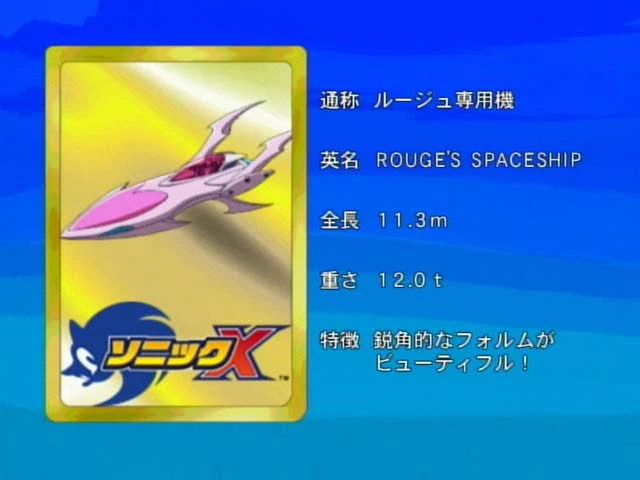Sonic Boom Space Ship

Link Copied.Top-secret military spaceplanes certainly know how to make an entrance.The U.S. Military’s X-37B, an uncrewed spacecraft that looks like a miniature version of the retired space shuttles, returned to Earth over the weekend after spending nearly two years in low-Earth orbit. It sent shockwaves rippling through the air as it entered the atmosphere over Florida, producing a sonic boom loud enough to across the state. The Air Force, which operates the X-37B, about its return minutes later, and soon posted of the spaceplane online. “Our team has been preparing for this event for several years, and I am extremely proud to see our hard work and dedication culminate in today’s safe and successful landing of the X-37B,” said Brigadier General Wayne Monteith, the commander of the Air Force’s Space Wing.
To which many observers said, wait, what?The news that the military had a space shuttle quietly orbiting Earth for more than 700 days came as a surprise to some. Why didn’t we know about this thing, the reaction seemed to go. The reaction illustrated the distinct line between the country’s civilian and military activities in space, and how much the general public knows about each. People know plenty about the civilian side—the missions to other planets, the SpaceX launches, astronauts’ cool Instagram pictures from the space station.
But secret military spaceplanes? You usually need a sonic boom to hear about that.
The X-37B mission is managed by the Air Force Rapid Capabilities Office, a unit inside the Air Force that specializes in developing aircraft technology. It at NASA in 1998 aimed at reducing the cost of space transportation, It was transferred to the Pentagon’s Defense Advanced Research Projects Agency, or DARPA, in 2004, where it became instantly classified. The X in front of the program’s name means the spacecraft is a member of a long line of planes and rockets the U.S. Has developed for experimental purposes, usually with a good amount of secrecy.
The X-37B, built by Boeing, borrowed its aerodynamic design from the NASA space shuttles that ferried astronauts to and from space for 30 years, but it. The X-37B weighs about 11,000 pounds at launch and has a wingspan of 14 feet. It can spend 270 days or more in orbit, and is launched into space aboard an Atlas V rocket. The Air Force only made public two tests involved in this latest mission: an that could allow spacecraft to carry heavier payloads and aimed at exposing 100 different kinds of materials samples to microgravity. This is where official information from the Air Force usually stops, and the speculation begins. Some in the military-space community the military might be tinkering with advanced surveillance sensors, or testing the electric-propulsion devices, known as thrusters, so it can put future reconnaissance satellites in lower orbits, where they can better see targets on the ground.
The Concorde, a now-retired supersonic passenger jet, flew at speeds of up to about 1,350 mph (2,180 km/h). Boom also aims to set a new speed record for civil aircraft, according to a blog post.

Others say the military wants to use the spaceplane as a weapon capable of approaching other satellites to observe them and, perhaps, interfere. The budget for the X-37B program is classified, but it’s likely in the hundreds of millions of dollars.
NASA and the Air Force provided $125 million to the project in its development stages, and Boeing contributed about $67 million. Crypt of the necrodancer walkthrough. In late 2002, Boeing received another $301 million to develop the spaceplane.Knowing all this, Laura Grego, a space-security expert and a senior scientist the Union of Concerned Scientists, wonders whether the X-37B is worth it.
“While it can do a number of things, it doesn’t seem particularly well-designed to do any of them except for returning a space craft in a nice, tidy way,” she told me over email. Grego said there are more efficient ways of getting things like thrusters and experiments into low-Earth orbit, like the robotic missions that transport cargo to the International Space Station. The X-37B is also not built to be especially agile in orbit, so sidling up to a satellite to check it out would be pretty difficult.“Maneuverability depends on mass—if you have to haul around wings and landing gear with you on all your zips and zags in space, you will run out of fuel more quickly than if you were designed to be lightweight and agile and never come back to the ground,” Grego said. “This is especially true if you are trying to get close to objects that are not already in nearby orbits, that takes a lot of fuel, which needs to be launched along with the plane.”Indeed, the most visible achievement of the X-37B program—the aspect the Air Force itself seems to want the public to pay the most attention to—is the capability to launch and land spacecraft in a way the U.S. Hasn’t done since the space shuttle program ended. The landing, shown in a video from the Air Force, looks cool whether you know what’s on board or not.
But the jump from space shuttle to space weapon is, as far as the public knows, seems pretty big.We want to hear what you think about this article. To the editor or write to letters@theatlantic.com.
MALCOLM DENEMARK/FLORIDA TODAYYet, dozens of residents woke up shocked and shaken early Monday morning by the earth-trembling waves that reverberated through the county after the Falcon 9's first stage returned to land at Cape Canaveral Air Force Station.9-1-1 calls and social media posts from startled residents flooded in immediately after the booster landing, which occurred about 10 minutes after the rocket's 12:45 a.m. Liftoff carrying a Dragon capsule en route to the International Space Station.Carrie Bailey of Titusville posted in a Facebook group page, Titusville, FL. The TRUTH about what's happening, “Did anyone else feel that boom last night with a flash???
